Best flowers to sow in the fall – 16 beautiful blooms to start now for a spectacular display
Now is the time to start growing these stunning perennials and annuals to bloom next year

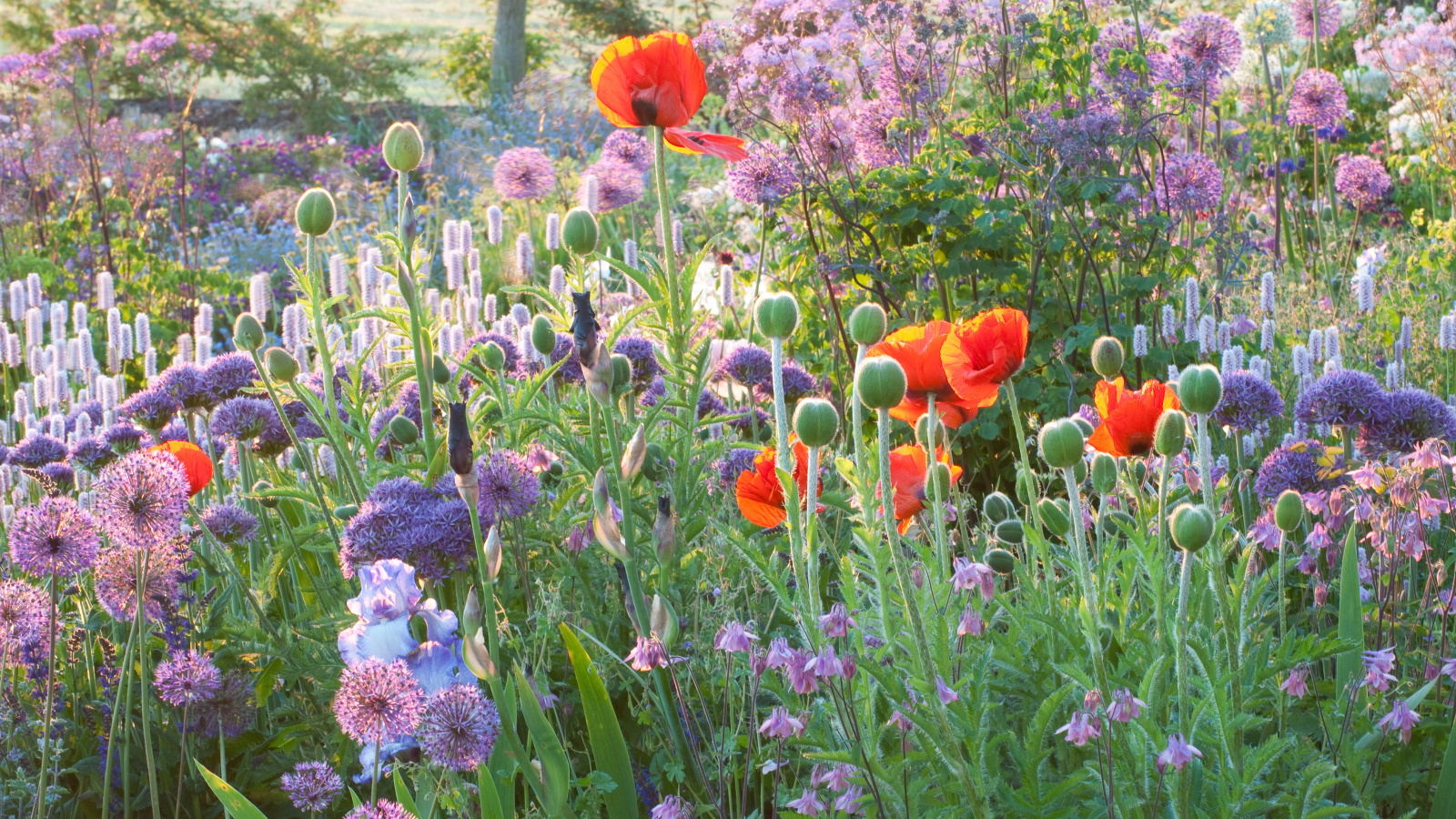
- 1. Lathyrus odoratus
- 2. Nigella damascena
- 3. Scabiosa ‘Burgundy Beau’
- 4. Centaurea ‘Black Gem’
- 5. Calendula ‘Indian Prince’
- 6. Linum grandiflorum
- 7. Viola tricolor
- 8. Silene ‘Blue Angel’
- 9. Cerinthe major ‘Purpurascens’
- 10. Ammi majus
- 11. Ammi ‘Green Mist’
- 12. Orlaya grandiflora
- 13. Eryngium giganteum
- 14. Lunaria rediviva
- 15. Ferrula communis
- 16. Baptisia australis
- FAQs
Getting your display of ornamentals right is all about the choices you make in fall. Many annuals and perennials benefit from being started as we approach the quiet end of the year. It gives them a chance to grow stronger roots and shoots, so they can storm ahead the following spring. Plants that are a little more mature in the weeks of early summer can better fend off pests and bugs. Ultimately, it also means they produce flowers earlier in the season, which is the main goal of fall sowing.
Despite this, we may hesitate when it comes to preparing for seed sowing in the fall. After all, why not wait until the sun and soil are warm in spring, and there’s less risk of frost damage? We have to remember that in wild settings, seedheads will naturally dry, burst open and fall to the ground at the end of summer. These seeds are either ready to germinate or lie dormant until conditions are right again, only starting into life after a cold snap. So fall sowing is just taking advantage of the natural cycle to create a thriving spring garden.
You might think early sowing is the preserve of those with space to store large trays and pots of seedlings over winter. But while some fall-sown seeds do need protection from prolonged cold spells, many are fine in a porch or small shelter, or using a layer of fleece. Even if you only squeeze in a small grow house, it’s worth sowing a few early seeds. After all, it’s so busy in spring as we prepare our flowerbed ideas that it makes sense to have a few young plants ready to go in the ground. So make plans now for next year’s showstoppers.

Give hardy annuals such as cornflowers and Ammi majus a flying start by sowing in the fall
16 of the best flowers to sow in the fall
Whether you’re saving seeds from the best annual flowers in your recent summer displays or looking at seed catalogues, fall is the perfect time to start planning your seed sowing schedule for the year ahead. You’ll either save money or you’ll have a clear recollection of just how plants have been raised. If you’ve saved your own seed, these will generally have a good success rate as they are adapted to your growing conditions. Furthermore, sowing seeds is all about the joy and anticipation of the growing season to come. So fill your future beds and borders with the best perennials and annuals you can find – while the getting is good.
1. Lathyrus odoratus
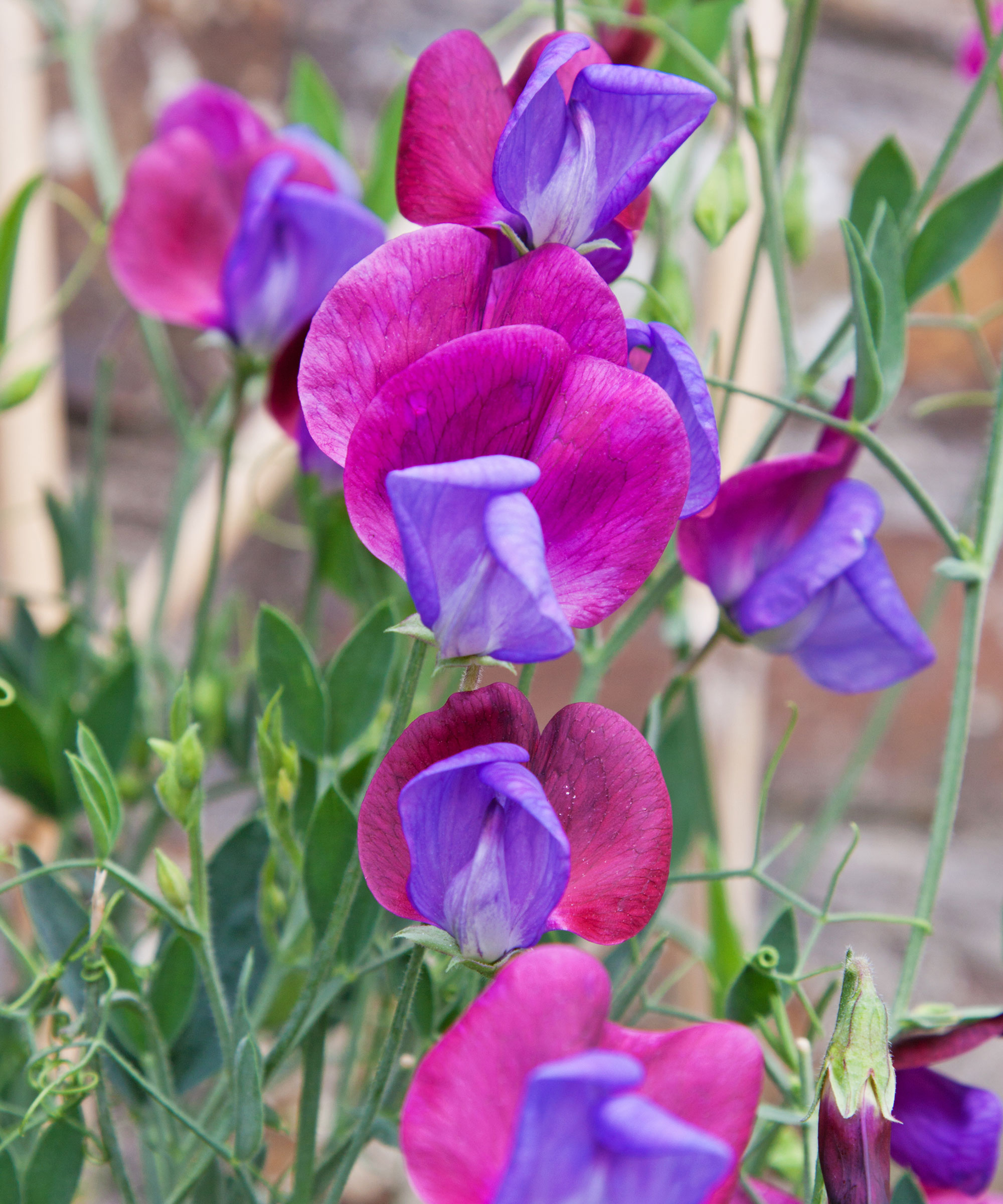
Lathyrus odoratus
- Hardiness: USDA 2-11
- Height: 8ft
- Spread: 12in
- Good for: Sweet pea wigwams, cottage gardens
One of the best flowers to sow in the fall is hardy annual Lathyrus odoratus. If you love to grow sweet peas and cottage garden plants, these plants are ideal for fall sowing. There are hundreds of sweet pea varieties to choose from, and early sowings between October and November reward with earlier blooms.
Sow one seed per deep pot, filled with open compost. Protect from hungry mice in a cold-frame or porch, where seedlings will tolerate temperatures down to 23°F. Pinch out shoots if seedlings get too leggy and plant out in spring, after the last frosts, when the ground is warm.
Shop for sweet pea seeds at Amazon.
Design expertise in your inbox – from inspiring decorating ideas and beautiful celebrity homes to practical gardening advice and shopping round-ups.
2. Nigella damascena
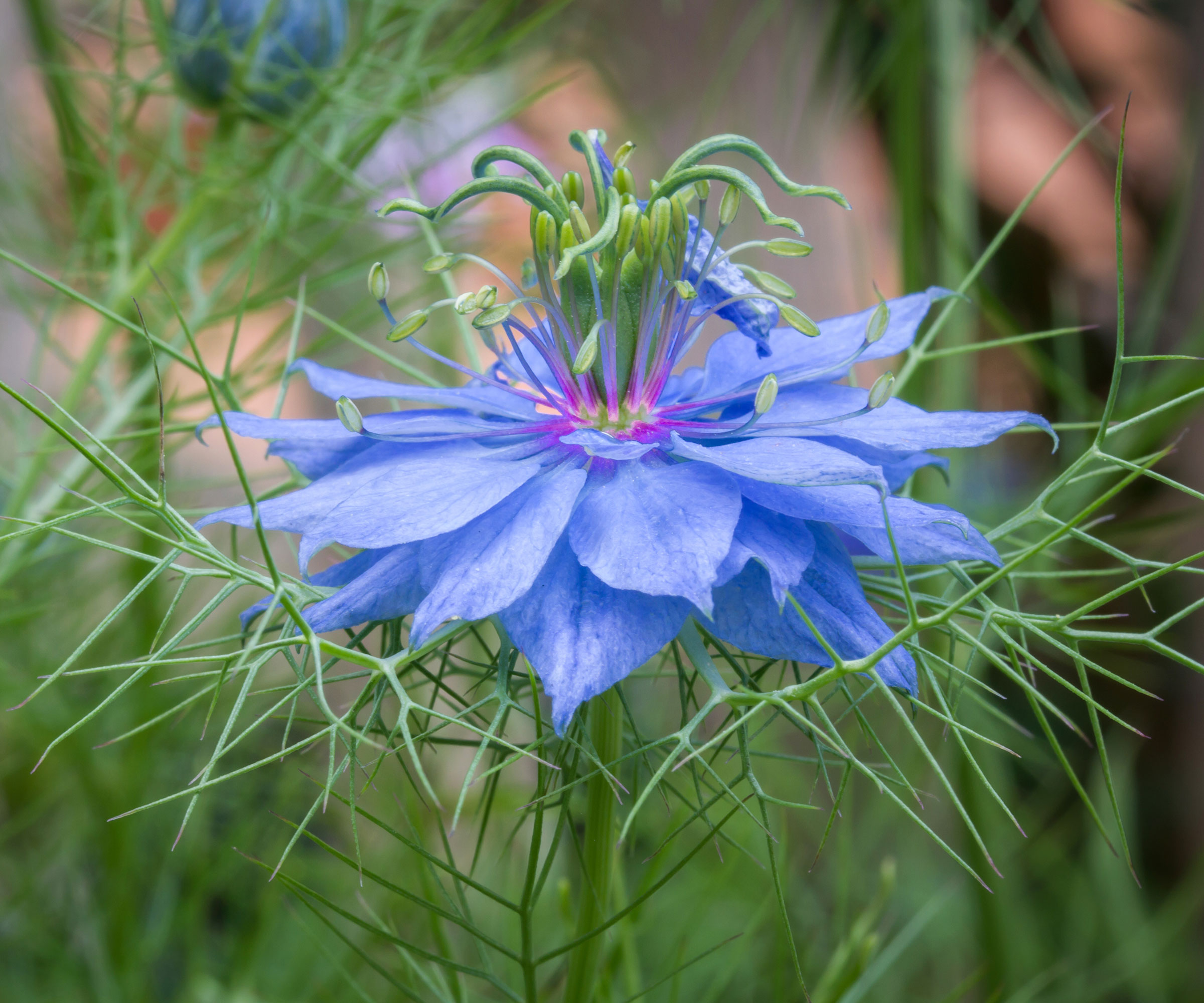
Nigella damascena
- Hardiness: USDA 2-11
- Height: 18in
- Spread: 12in
- Good for: Self-seeding, cottage gardens
If you are looking for classic cottage garden ideas and a hardy annual that will self-seed enthusiastically, Nigella damascena is one of the best flowers to sow in the fall. By collecting seed from nigellas in your garden and sowing them yourself, you can curate where they grow in your borders.
Capture the tiny seeds at the end of summer by placing a paper bag over the drying seed pods, then turn the spent stems upside down. Sow seeds into a tray of fine compost and cover with vermiculite. Prick out young seedlings once the second set of leaves appears, potting on when the young plant is showing roots at the bottom of the pot.
Find nigella seeds at Amazon.
3. Scabiosa ‘Burgundy Beau’
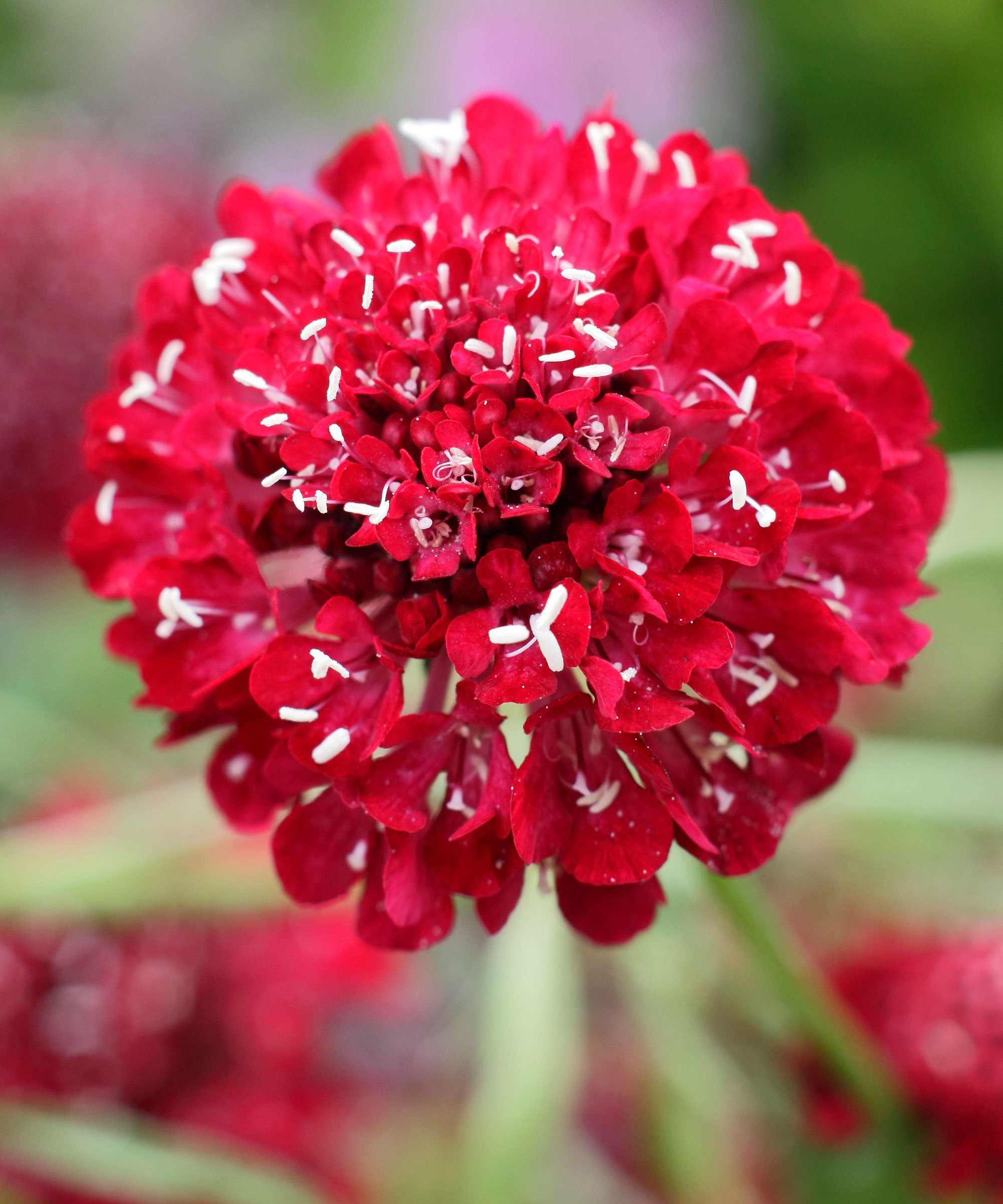
Scabiosa atropurpurea ‘Burgundy Beau’
- Hardiness: USDA 4-11
- Height: 2ft
- Spread: 12in
- Good for: Butterfly gardens, containers
Another hardy annual to sow from seed, Scabiosa atropurpurpurea ‘Burgundy Beau’ is a more unusual variety of the pincushion-like scabious. With its purple domed flower heads that bloom on repeat through the summer, it is ideal if you are after the best plants for a butterfly garden or wildflower garden.
Sow sourced seeds in September into moist, well-drained compost and keep warm to encourage germination. Overwinter in a cold frame and plant out after the last frost. These flowers can be cultivated in containers as well as flower beds.
Scabiosa also comes in a range of other colors - try sowing these mixed colors scabiosa from Walmart.
4. Centaurea ‘Black Gem’

Centaurea cyranus ‘Black Gem’
- Hardiness: USDA 2-11
- Height: 24in
- Spread: 10in
- Good for: meadow planting, sunny borders
Summer meadows and borders wouldn’t be the same without cornflowers, and this hardy annual makes one of the most intense and dramatic options for sowing in the fall. Dark maroon Centaurea cyanus ‘Black Gem’ is more unusual than more common blue and pink varieties, but is just as easy to grow from seed. It's perfect to add to your display of purple plants.
These flowers thrive even in poor soil. Sow directly where you want your flowers to grow. Choose a weed-free patch and label so you can be sure you’re not nurturing weeds. Alternatively, sow a small cluster of seeds into pots and plant them out the following spring.
If you prefer the classic colors of cornflowers, opt for for these mixed cornflowers from Burpee.
5. Calendula ‘Indian Prince’
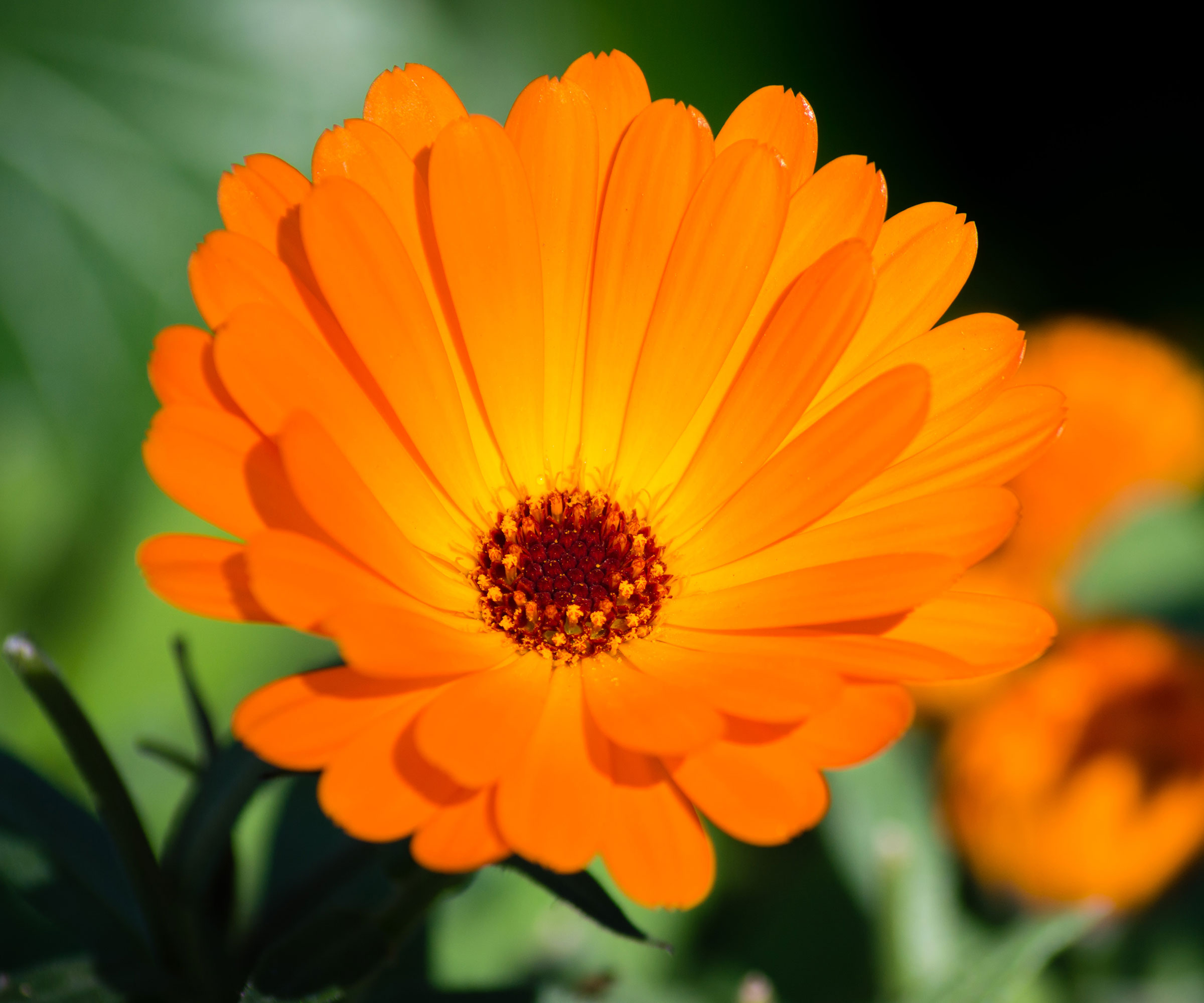
Calendula ‘Indian Prince’
- Hardiness: USDA 2-11
- Height: 18in
- Spread: 18in
- Good for: Sunny borders and containers
This cheerfully hued plant is one of the most vibrant of our best flowers to sow in the fall. For anyone wondering when to start marigolds indoors, Calendula ‘Indian Prince’ rewards a fall sowing with pops of color next year. They make lovely container gardening ideas and mixed border options.
Marigolds will hybridise, and you can allow them to self-seed at random. But their unusual, insect-like seeds are easy to save at the end of summer if you want a few colourful surprises. Sow in September and October into pots of strong plants ready to add to borders and containers in spring.
Calendula 'Indian Prince' seeds are available at Amazon.
6. Linum grandiflorum

Linum grandiflorum
- Hardiness: USDA 2-11
- Height: 18in
- Spread: 12in
- Good for: Vibrant red themes, meadow planting
Linum grandiflorum (or flowering flax, as it is also known) is a very floriferous annual. This easy-to-grow plant is one of the best for sowing in the fall. If you are looking to grow dazzling florals with inventive garden color schemes, then its cherry red blooms make a real impact.
Sow from late summer to early autumn into trays using a heated propagator to encourage germination. Thin seedlings and pot on when ready, and keep in a frost-free location over winter. Plant out when the soil is warming up in spring.
Shop for flowering flax seeds at Walmart.
7. Viola tricolor

Viola tricolor
- Hardiness: USDA 3-9
- Height: 6-12in
- Spread: 6-12in
- Good for: Sunny pots and borders
As well as being one of the best options for a low maintenance garden border, Viola tricolor is another excellent hardy annual for fall sowing. If you are looking to propagate pansies and violas, this is a good way to introduce the wild form of pansy to your garden. It is a diminutive and charming addition to containers and front of borders.
These rely on good light levels rather than heat to germinate, so can be successfully grown from seed in autumn sowings while days are still long. Use a light mix of compost and sand and pot on when ready. Planted out the following spring into rich, well-drained soil, they will tolerate partial shade. More common pansies can be grown from seed in the same way.
Try sowing these tricolor viola seeds from Burpee.
8. Silene ‘Blue Angel’
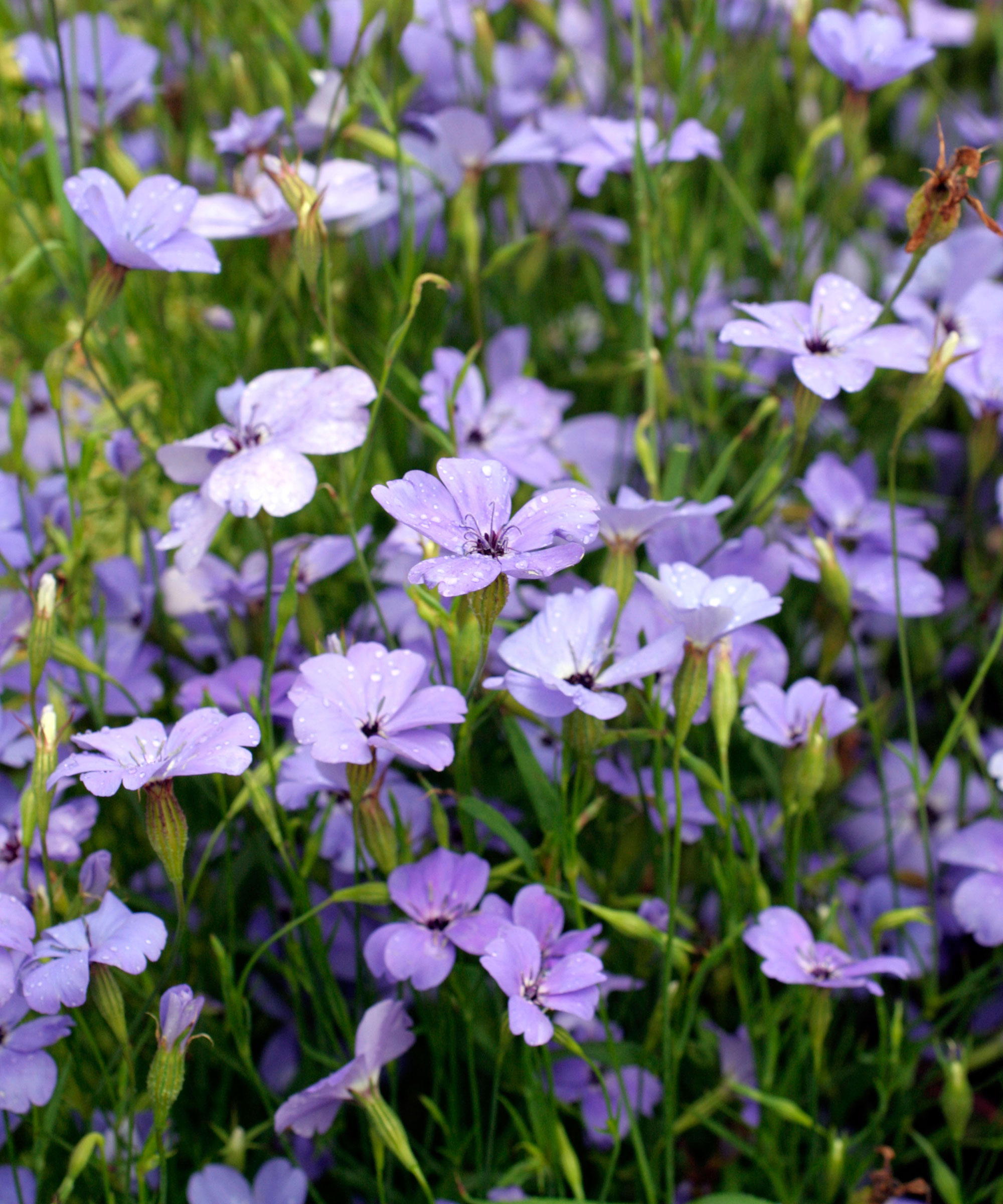
Silene coeli-rosa ‘Blue Angel’
- Hardiness: USDA 4-7
- Height: 12in
- Spread: 12in
- Good for: Purple/blue themes, sunny borders
Silene coeli-rosa 'Blue Angel' is one of the best flowers to sow in the fall if you are after unusual floral tones. Perfect for lovers of purple plants and indigo hues, this beautiful lilac blue-flowering annual is well worth growing from seed for your own patch.
It can be sown in autumn or early spring into fine moist compost, covering seeds with a layer of vermiculite or fine horticultural grit. Use a heated propagator to start them well. Prick out seedlings into small pots and plant out in spring when established. Thrives in full sun and well-drained soil.
9. Cerinthe major ‘Purpurascens’
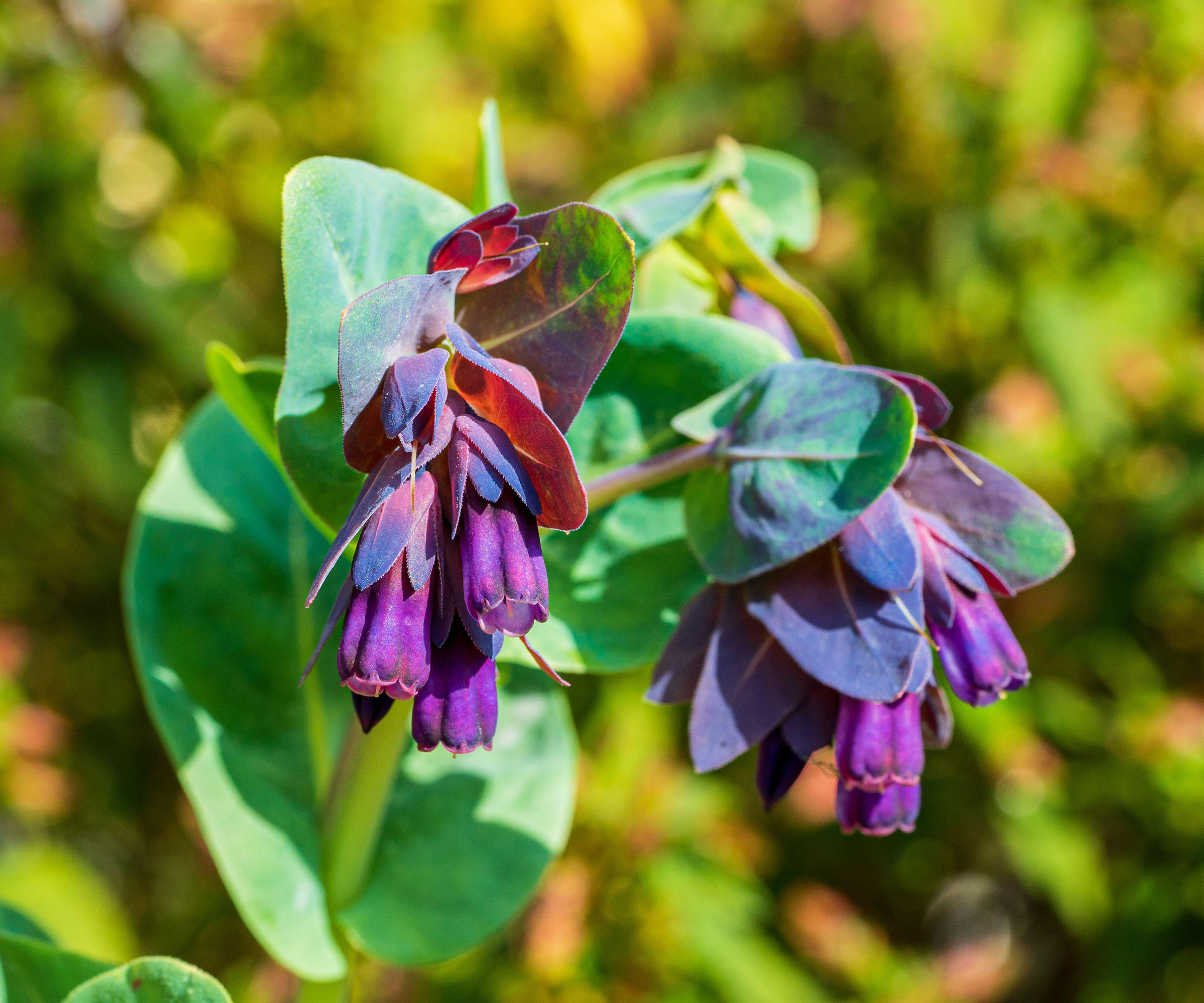
Cerinthe major ‘Purpurascens’
- Hardiness: USDA 2-11
- Height: 2ft
- Spread: 2ft
- Good for: Modern borders, cottage gardens
With its subtle glaucous green colouring and purple-tinged flowers, honeywort is a beautiful annual. It is ideal if you want to plant a cottage garden border and also looks enchanting in borders and containers. Cerinthe major ‘Purpurascens’ will also self-seed in the right conditions.
To maintain your stock of this mysterious and captivating flowering plant, try sowing in the fall. Seedlings can be planted out in milder areas in the fall. Alternatively, they can be overwintered in a greenhouse or cold frame, ready to plant out in spring.
Shop for cerinthe seeds at Amazon.
10. Ammi majus

Ammi majus
- Hardiness: USDA 2-11
- Height: 6ft
- Spread: 2.5ft
- Good for: Pollinator-friendly plots, meadow planting
For those looking for stunning white garden ideas to sow in the fall, Ammi majus is a charmingly delicate option. One of the best plants for pollinators, it is also amongst the most umbelliferous plants you can grow and benefits from a fall sowing when the seed is still relatively fresh.
Being naturally tall, leggy plants, they are stronger when they have been sown early and will grow sometimes to double the height of spring-sown plants. Grow in sun or partial shade for airy, lacy, pollinator-friendly flowers from midsummer.
Ammi majus seeds are available at Amazon.
11. Ammi ‘Green Mist’
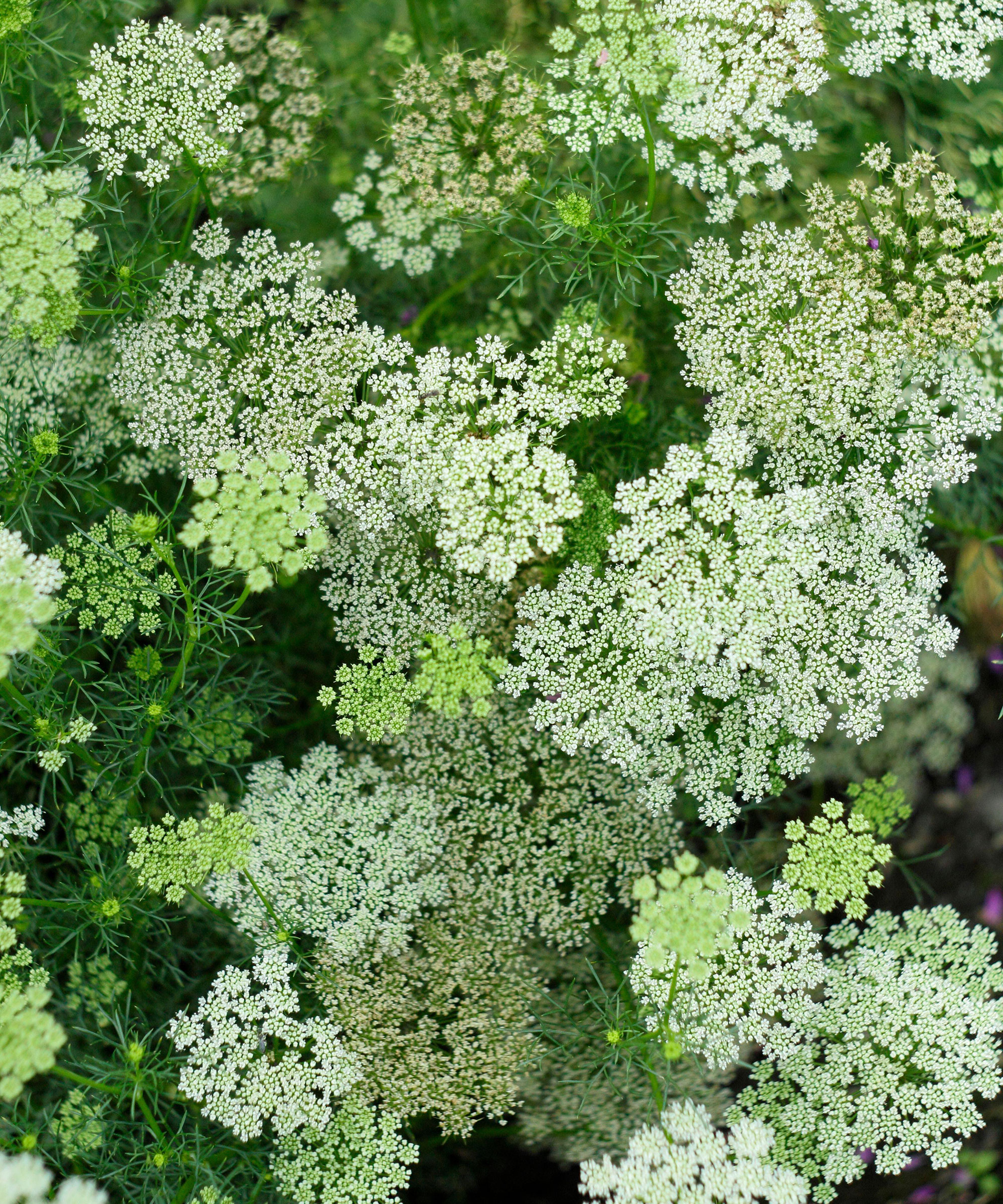
Ammi ‘Green Mist’
- Hardiness: USDA 2-11
- Height: 4ft
- Spread: 18in
- Good for: Cutting gardens, meadow planting
If you are looking for intriguing cutting garden flowers to grow, Ammi visnaga ‘Green Mist’ is a reliable and memorable umbelliferous plant to choose. It is one of the best flowers to sow in the fall for feathery foliage and domed flowerheads, with an unusual greenish tinge to the blooms.
With its long, elegant stems, it’s also great for growing in mixed borders as well as meadow plantings. Sow in August and September into seed trays, using a heated propagator to help germination. Pot on seedlings when large enough and overwinter in a sheltered spot.
Shop for 'Green Mist' seeds at Amazon.
12. Orlaya grandiflora

Orlaya grandiflora
- Hardiness: USDA 2-11
- Height: 2ft
- Spread: 12in
- Good for: Mixed borders, Mediterranean themes
Another gorgeous option if you are looking for umbellifers to sow, this airy umbellifer is ideal for drought-tolerant landscaping ideas once established. Orlaya grandiflora has typical lacy foliage and pure white, lacy flowers, but significantly more compact than other cow parsley types.
Perfect for sowing in the fall, the white laceflower is a fine choice for mixed borders, combining well with Mediterranean plants and grasses. Sow directly from late summer onwards for flowering the following year.
Sow these Orlaya grandiflora from Walmart.
13. Eryngium giganteum

Eryngium giganteum
- Hardiness: USDA 4-9
- Height: 3ft
- Spread: 20in
- Good for: Structural intensity, mixed borders
Eryngiums are one of the most dramatic perennials you can grow for bold garden landscaping and structural interest, and make a powerful statement in any border following a fall sowing. Sow Eryngium giganteum seeds in September, ideally from fresh seed that you have saved or collected.
As they are deep-rooted plants, sow seeds directly where you’d like them to grow, choosing a spot with weed-free soil. While they are some of the best flowers to sow in the fall, they might take a few years to mature and flower, so keep young plants from getting overcrowded.
There are plenty of eryngium varieties to choose from. These Eryngium Planum seeds from Amazon are the perfect blue flowers to grow.
14. Lunaria rediviva
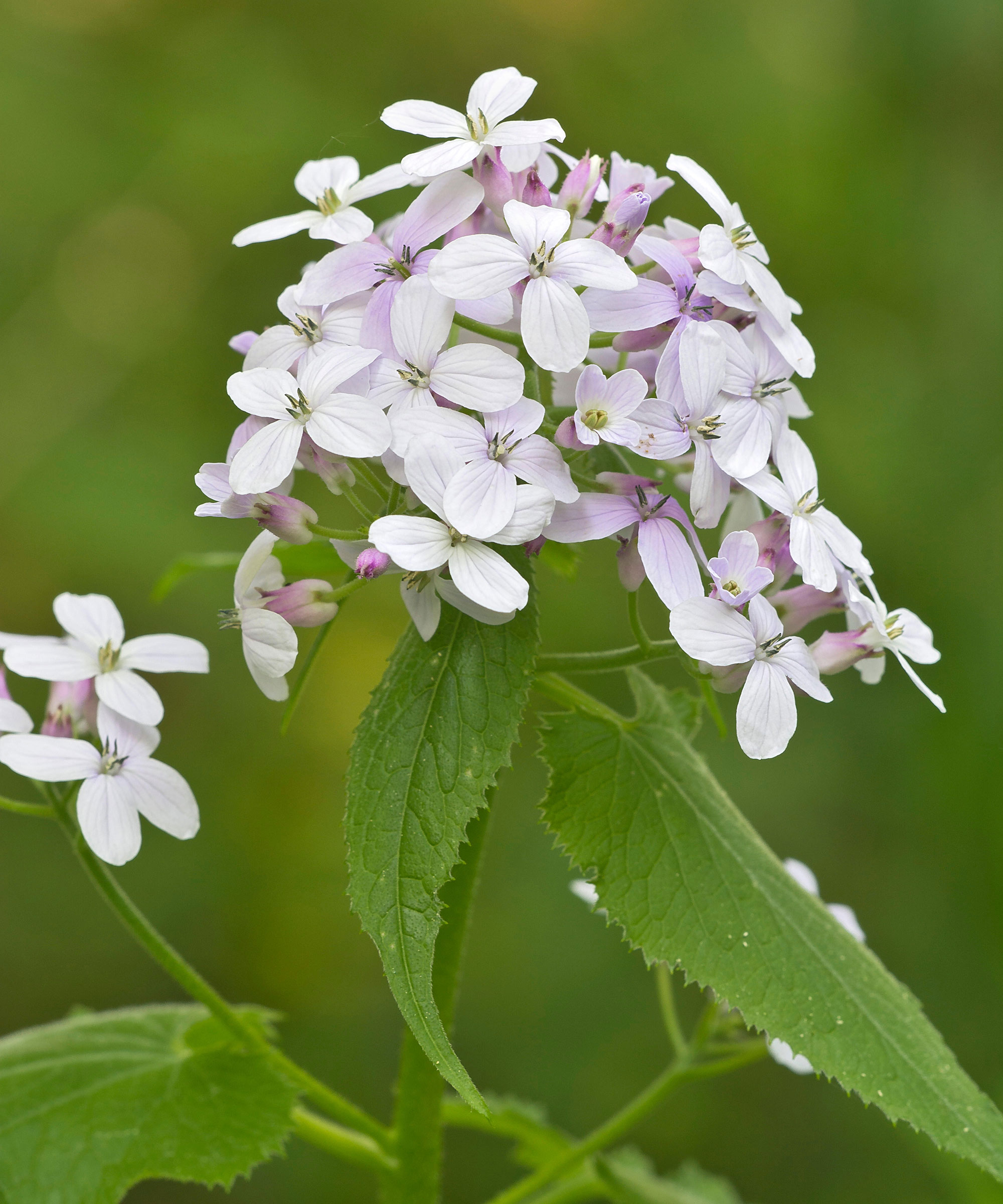
Lunaria rediviva
- Hardiness: USDA 5-8
- Height: 3ft
- Spread: 20in
- Good for: Shady corners
Also known as perennial honesty, Lunaria rediviva is another of the best perennials to try if you are sowing in the fall. Perfect for adding delicate interest to all manner of backyard landscaping ideas, it is a great choice for intriguing fragrance and charming florals.
Native to damp European chalk woodlands, its pale purple flowers in late spring and earlier summer are followed by striking seed pods. The seeds benefit from being sown directly in the ground in the fall to overwinter. They need a cold snap to help them germinate the following spring. Save seeds to replenish your stock, or allow them to self-seed.
Shop for Lunaria rediviva seeds at Amazon.
15. Ferrula communis
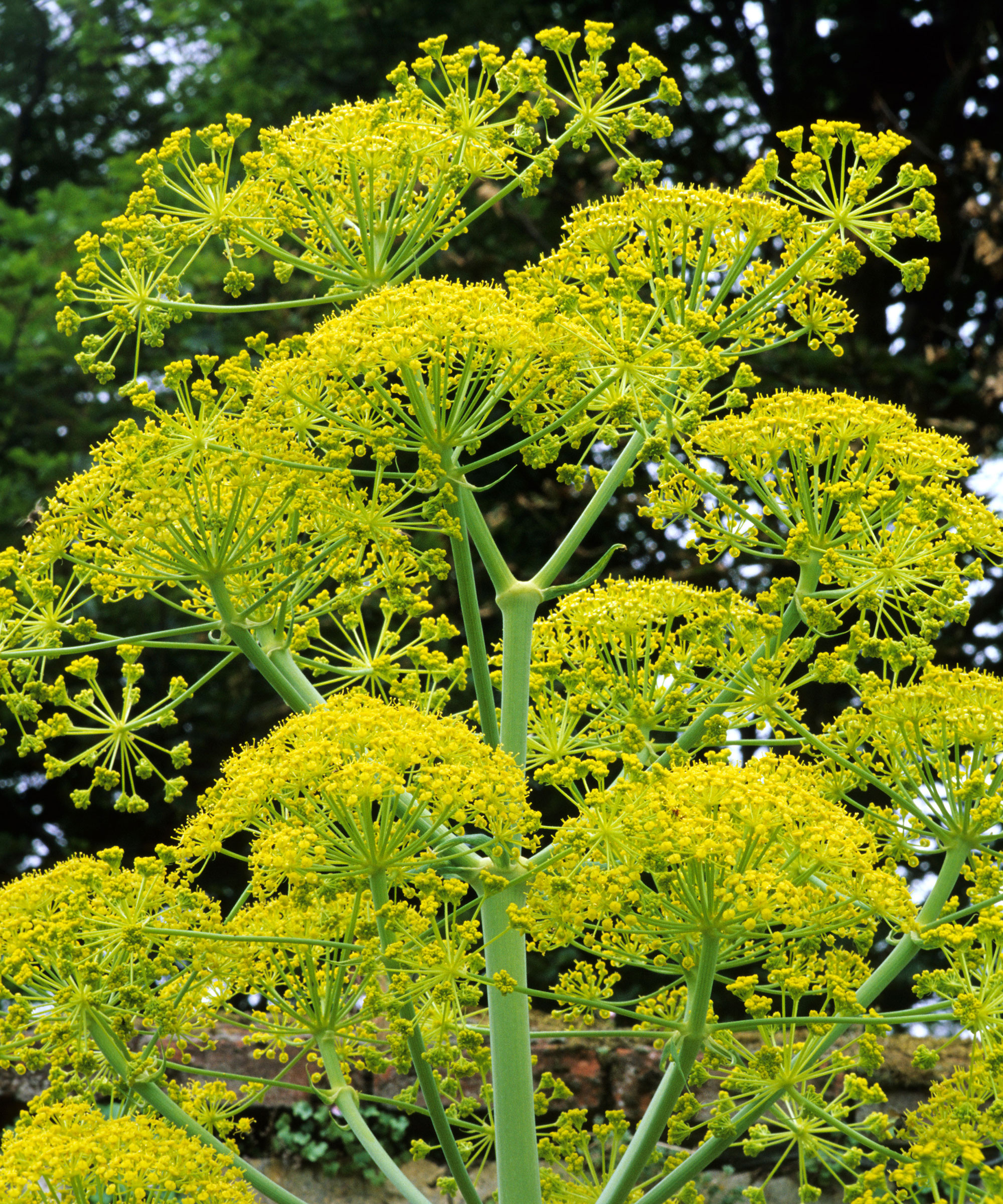
Ferrula communis
- Hardiness: USDA 2-11
- Height: 15ft
- Spread: 3ft
- Good for: Garden drama, golden color themes
If you are looking for stunning ideas for sensory garden plants, giant fennel (Ferrula communis) is a spectacular sight in borders. The large acid-yellow blooms also make great cut flowers. These are some of the best flowers to sow in the fall, but bear in mind that germination can be slow as seeds need a period of cold to germinate.
Sow in trays in late fall and winter. Keep in a cool place, and don’t let them dry out. Pot on seedlings in spring and plant fennel out after the last frost. Once established, these are good plants for drought tolerance. Although perennial they can be short lived, but they will also self-seed.
Giant fennel seeds are available to purchase from Walmart.
16. Baptisia australis
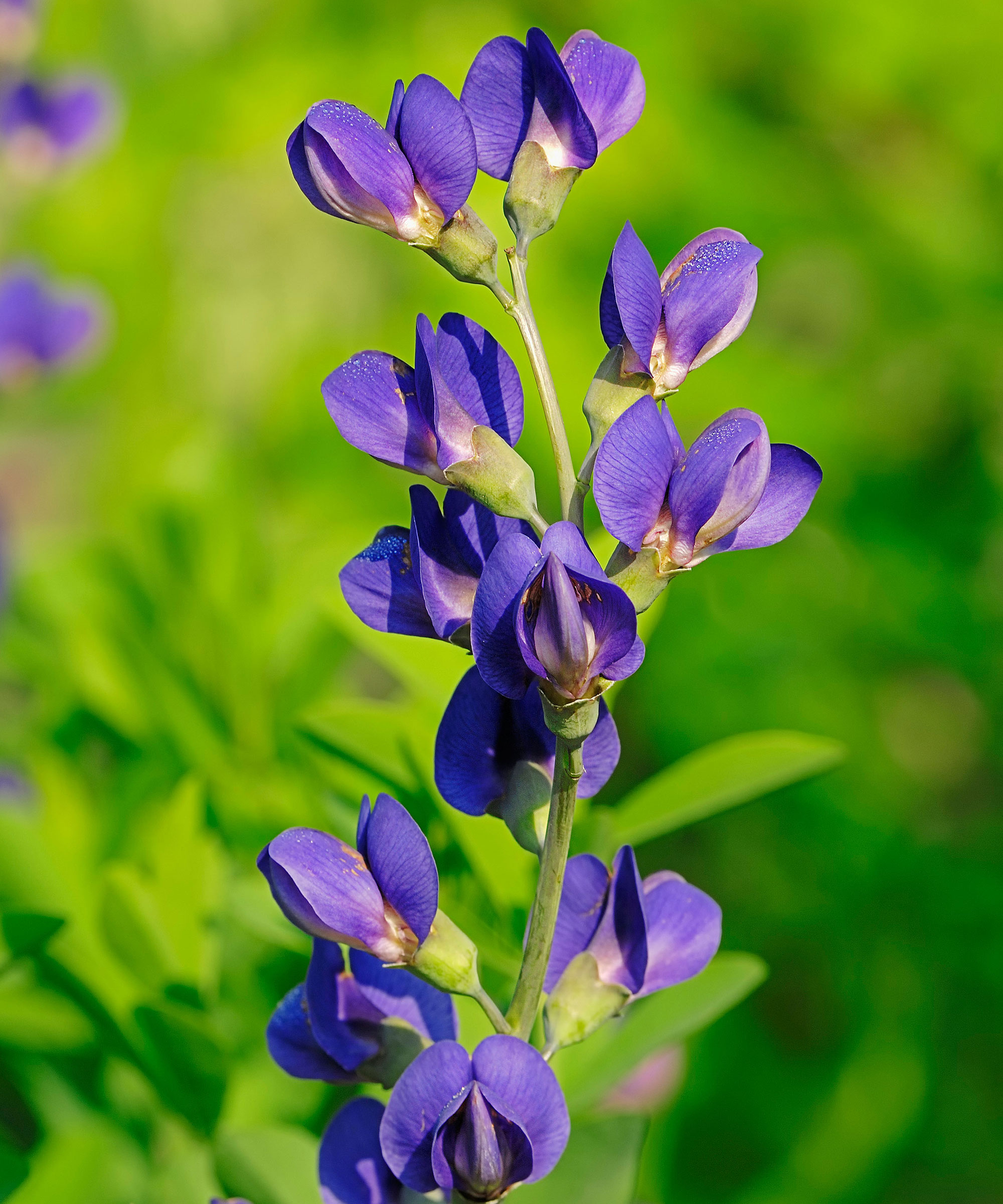
Baptisia australis
- Hardiness: USDA 3-9
- Height: 4ft
- Spread: 3ft
- Good for: Blue/purple themes, mixed borders
If you are looking for charming purple-blue tones for your plot, North American native Baptisia australis is a pretty option for sowing in the fall. This tall, upright perennial is one of the easiest flowers to grow from seed and produces striking flowers in June.
Sow fresh seed in late summer and fall. Prepare the seed by nicking with a knife and soaking before sowing on to compost and cover with grit. To germinate from a fall sowing, seeds need six-12 weeks of cold, followed by time in the warmth. Harden off young plants and plant out in spring after the last frost.
Baptisa australis seeds can be purchased from Walmart.
FAQs
Do seeds germinate in fall?
In nature, plants set seed at the end of summer and after falling to the ground, some will germinate and some will lie dormant until spring. This is now a process that gardeners are starting to adapt through the fall and winter months with some excellent results. There are clear advantages to expanding your cold frame and greenhouse ideas to include fall sowing.
A lot of seeds require a period of cold in order to germinate, using a process called stratification. These seeds need to be sown in the fall in order to go through a winter. Also, some seeds lose viability as they age, meaning germination will not be so successful. So where that is a possibility, sowing in the fall will help you get the best results.
Will cold weather kill off seeds sown in fall?
Fall-sown seeds germinate easily in still-warm temperatures before the first frosts. It’s a great idea to sow flower seeds, particularly hardy annuals, in the fall, as seeds germinate easily and root systems start developing. And you don’t have to worry about knowing how to protect plants from frost. Growth might slow down over the winter, but the seedlings will be robust enough to survive colder months and the roots will continue to develop.
Once you have selected the best flowers to sow in the fall, you can direct-sow or start in trays and, if the plants are big enough, plant out before the winter. Otherwise, they can be planted out in March. A greenhouse is nice to have, but not necessary. Leave plants in pots in a cold frame, porch or somewhere protected outside.
If you are interested in wildflowers, it’s worth adding these to the plants you are sowing in the fall. As grass growth begins to slow down, it allows wildflower seeds the chance to germinate. So if you’re looking to plant a wildflower meadow you can sow seeds directly into your prepared soil. To ensure against any winter losses, sow some seed in pots to grow on as plugs to plant out next spring.

In her years of gardening, Camilla has designed planting schemes for gardens large and small in and around London, written about plants and how to grow them, and worked on BBC gardening TV shows in the UK. She's also works as a therapeutic horticulturist, teaching growing for wellbeing and mental health.